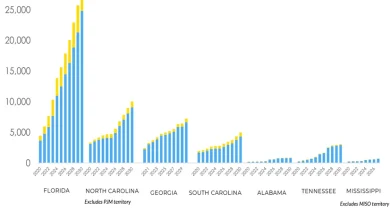Gausman’s subtle post-season changes keeping opposing hitters on their toes

On Friday night, Game 6 starter Kevin Gausman will play an enormous role in determining whether the Toronto Blue Jays win their first World Series since he was two years old.
Based on what he’s done in the post-season, that has to be an appealing prospect for Toronto. Gausman hasn’t produced a Trey Yesavage-like dominant outing in October, but he has pitched into at least the sixth in each of his four playoff starts while delivering a 2.55 ERA over 24.2 innings. There are holes to be poked in his peripheral numbers, but he’s gotten the job done at a time of year when results trump process.
That doesn’t mean the process that has allowed him to keep runs off the board isn’t important. Gausman is perceived as an easy starter to understand with a high fastball and low splitter combo that beats hitters with execution rather than the element of surprise.
But while that combo is at the core of what he does, the 34-year-old has shaken things up a bit in the playoffs. At first glance, his three-pitch repertoire has been deployed approximately the same way it was during the regular season:
There’s a slight shift to the splitter, but over a relatively small sample, it doesn’t look like much. Gausman’s adjustment only shows itself when we break things down by batter handedness.
Facing left-handed hitters
The change here is as simple as it gets, considering Gausman is pretty much a two-pitch guy against lefties, and he’s essentially flipped his fastball and splitter usage rates.
While it may seem intuitive for the veteran to lean into his best swing-and-miss pitch — particularly because it’s moving arm side away from left-handed hitters — this is an extreme we’ve never seen before. Gausman has never had a month in his career where his splitter rate topped 50 per cent against lefties — he’s been at exactly that in three instances (twice in 2019 and once in his rookie season), but he was working out of the bullpen in each case.
Leaning on the splitter has been a clear positive as his whiff rate with the pitch against left-handers (49.1 per cent) is significantly higher than it was during any month of the regular season, or the campaign overall (36 per cent).
One thing that’s been noticeable is an increased willingness to use the pitch over and over again when facing hitters who are clearly vulnerable.
The best example in these playoffs is Jorge Polanco. During the regular season, Polanco slugged .217 against the pitch, good for a minus-1 Statcast run value. It was the only pitch type he was in the negatives against.
So Gausman fed him split after split in the ALCS, which seemed to contribute towards him going 0-for-6 against the 34-year-old with two strikeouts.
Even after Polanco had seen him twice as a starter, Gausman stuck to his guns in his Game 7 relief outing — refusing to deviate from his approach on the way to an inning-ending groundout.
Another benefit of Gausman’s focus on the splitter against left-handers is that it’s helped him avoid early-count damage. The right-hander’s traditional modus operandi is to get ahead with the fastball and finish with the splitter, but he’s been a little less predictable at the beginning of at-bats against lefties in the post-season, with solid results.
In the first two pitches of at-bats to lefties in the postseason, Gausman has thrown 57.1 per cent splitters, with opponents slugging .214 without an extra-base hit. In the regular season, opponents slugged .432 while he was throwing 56.7 per cent fastballs.
The playoff sample is small, but hitters had come to expect early-count heaters from Gausman, and that’s not what they’ve gotten in October. That may have helped prevent the kind of fireworks the Blue Jays managed off Blake Snell on Wednesday to tilt the series. In the past two years (including the 2025 playoffs), lefties have hit just two home runs off the Gausman splitter.
Facing right-handed hitters
This is where things get a little more complicated. The idea of throwing more splitters to lefties is intuitive. Doubling Gausman’s slider rate when it’s clearly his worst pitch isn’t a layup.
What we’re looking at here is the willingness to lean into hitters’ weaknesses over the right-hander’s strengths at times. The splitter still works against righties — it’s accounted for seven of Gausman’s eight Ks against right-handed hitters in October — but certain opponents have engendered a newfound willingness to put it on the shelf.
In the ALCS, three Seattle Mariners saw a heavy dose of sliders and almost no splitters: Randy Arozarena, Eugenio Suárez and Victor Robles. The pitch mix to that trio looked like this:
That’s a radical departure from what we normally see from Gausman, and those hitters went 1-for-11 in the series with a home run off a fastball down the middle. The sliders he spun to them resulted in three outs, including a called strikeout of Robles.
It’s not a remarkable pitch on its own merits, but Gausman’s increased willingness to deploy it in certain matchups has been helpful. Its use wasn’t as notable in Game 2 of the World Series, but there is one hitter worth watching on Friday to see if he goes to a fastball-slider mix: Mookie Betts.
Gausman threw Betts just eight pitches in their first battles of the World Series, including two sliders and no splitters. This season, the future Hall of Famer destroyed splitters (.500 AVG, .800 SLG) with far more modest results against sliders (.228 AVG, .406 SLG). He also had his worst overall offensive production versus breaking balls since his rookie season:
As a 13-year MLB veteran who has enjoyed immense success, Gausman doesn’t seem like an obvious candidate to be messing with a proven formula in the most important starts of his career. Add in the fact that he has a three-pitch repertoire that limits possible approach tweaks, and you’d think he’d be the ultimate ‘if it ain’t broke, don’t fix it’ type.
Yet, during this playoff run, he’s played with his plan of attack in ways we’ve never seen before to great effect. Gausman’s been reactive to opponents’ strengths and used their expectations of him against them.
The result hasn’t been the kind of historic performance some of his teammates have produced, but he’s kept his team in every game he’s pitched in October. That’s the fundamental job of a starting pitcher, and if he manages it one more time, there’s a good chance he’ll be the last starter the 2025 Blue Jays use en route to a World Series title.





